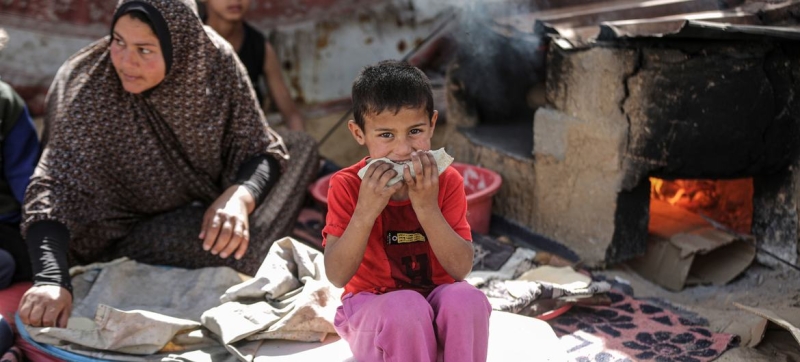
22 percent of Gaza’s population is severely food insecure. FAO sounds alarm over high risk of famine across Gaza Strip Economic Development
The Food and Agriculture Organization of the United Nations (FAO) has expressed alarm over the high risk of famine throughout the Gaza Strip. This threat will continue as long as the conflict continues and humanitarian access to the enclave is limited, says a report published as part of the global initiative Integrated Food Security Phase Classification.
“The report clearly indicates that once access to food and water improved in northern Gaza, the risk of famine decreased significantly, so the solution to the problem is clear,” FAO chief economist Maximo Torero told a press briefing in New York.
He stressed that, despite some improvements, the situation remains very fragile and unpredictable and any significant change could lead to rapid deterioration of the situation and widespread famine. Maximo Torero added that in northern Gaza, ground operations continue at high intensity, causing forced displacement of the population, which further aggravates the situation of social and food security.
New data shows that while increased supplies of food and nutrition services to northern provinces have temporarily eased food shortages, the situation in the south has worsened since fighting resumed in early May.
According to the report, about 495 thousand people, or 22 percent of the sector’s population, currently experience catastrophic food insecurity, while almost the entire population – 2.15 million people, or 96 percent – faces crisis levels of acute food insecurity. lack of food or higher.
More than half of arable land damaged
Analysis of the latest FAO satellite data shows that the amount of damaged agricultural land in Gaza is constantly increasing. As of May 2024, more than 57 percent of the sector’s land was damaged; of which 61 percent are in orchards, 19 percent in vegetable gardens and 20 percent in grain crops. Since January of this year, the amount of damaged land has increased by 33 percent. Conflict-related: greenhouses damaged by almost 33 percent, wells by more than 46 percent, solar panels by almost 65 percent; More than 2,300 agricultural infrastructure destroyed.
Local food production under threat
Agriculture in the Gaza Strip provides approximately 20-30 percent of daily food consumption. The fighting has caused enormous damage to the agricultural sector, which has almost completely stopped local production of fresh and nutritious food, reducing the population’s access to basic foods needed for a healthy diet. The livelihoods of vulnerable farmers, pastoralists and fishermen have also been significantly affected, posing significant challenges to future recovery. Households heavily dependent on agriculture lost up to 72 percent of their income.
